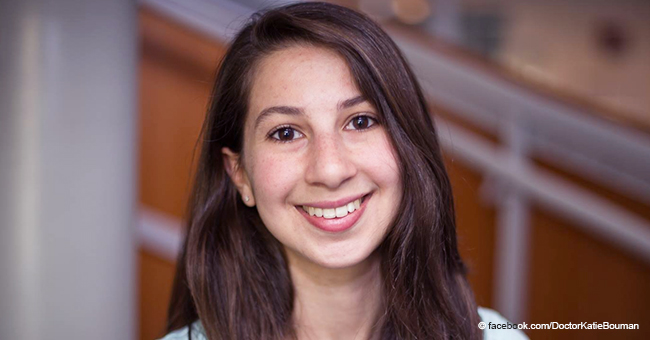
Meet the Woman Who Made It Possible to Take 1st Ever Pic of a Black Hole That Has Everyone Talking
On Wednesday, an international team of more than 200 researchers shared the first-ever image of a black hole. However, this achievement would not have been possible without the help of one person.
A woman worked on the algorithm that allowed the amazing image to be caught on film.
Getting an image of a black hole in space was a task that seemed impossible for scientists because of the complexity. Documenting a black hole was “like trying to take a photo of an orange that's on the moon with your smartphone.”
If it wasn’t for Katie Bouman helping out, the achievement would’ve continued to elude the scientists. Bouman, 29, developed a crucial algorithm that assisted with devise imaging methods.
Three years ago when she was a graduate student in computer science and artificial intelligence at the Massachusetts Institute of Technology (MIT), Bouman led the creation of the algorithm. Today we have a picture of a supermassive black hole and its shadow at the center of a galaxy known as M87.
What made the task so difficult all this time was because black holes are far away and compact. They’re also said to be invisible despite giving off a shadow when they interact with the materials around them.
With Bouman and other’s help, imaging algorithms were used by researchers to create three scripted code pipelines to piece together the picture. The Event Horizon Telescope (EHT) was designed to capture images of a black hole.
It’s a planet-scale array of eight ground-based radio telescopes which work through international collaboration. Vincent Fish, a research scientist at MIT's Haystack Observatory, gave Bouman most of the credit.
He said, "[Bouman] was a major part of one of the imaging subteams.” Fish continued: "One of the insights Katie brought to our imaging group is that there are natural images."
He added:
"Just think about the photos you take with your camera phone -- they have certain properties. ... If you know what one pixel is, you have a good guess as to what the pixel is next to it."
Speaking about all the credit she’s been getting Bouman said: "No one of us could've done it alone. It came together because of lots of different people from many backgrounds."
In the fall, she will start work as an assistant professor of computing and mathematical sciences at the California Institute of Technology. MIT’s Computer Science and Artificial Intelligence Lab took to Twitter with a series of posts to honor the young scientist.
The image of the black hole was the first-ever direct visual evidence that they actually exist. The supermassive black hole has a mass that is 6.5 billion times that of our sun.
Sheperd Doeleman, the director of the EHT Collaboration said: "We have seen what we thought was unseeable. We have seen and taken a picture of a black hole."
